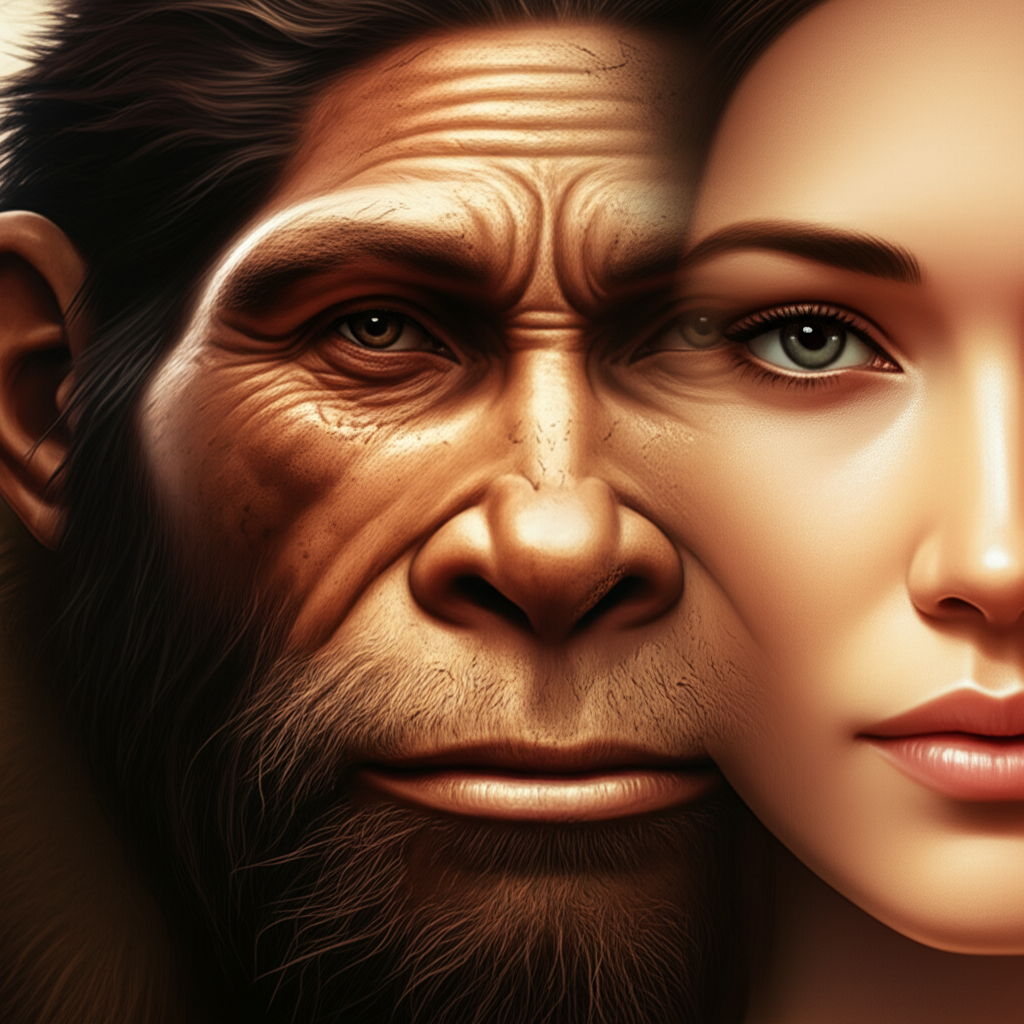Neanderthal-Human Interbreeding: New Evidence Pushes Timeline Back 100,000 Years
A remarkable fossil discovery suggests ancient populations intermingled much earlier than previously understood.
Recent scientific findings have unveiled compelling evidence that suggests interbreeding between Neanderthals and early modern humans occurred significantly earlier than previously thought. The discovery centers on the fossilized remains of a child, estimated to be around five years old, who lived approximately 140,000 years ago. Genetic analysis of this individual indicates that both parents were of different hominin species, with one being a Neanderthal and the other a Denisovan, a closely related archaic human group.
Unearthing Ancient Ancestry
This groundbreaking discovery, detailed in a recent report, challenges existing timelines for Neanderthal-human interaction. Prior to this, the earliest confirmed instances of interbreeding were dated to around 40,000 to 60,000 years ago, based on genetic studies of modern human DNA. The new evidence suggests that these ancestral encounters and subsequent gene flow began much further back in time, potentially reshaping our understanding of early human migration and adaptation.
The fossil itself, a fragment of a finger bone, was initially discovered in the Denisova Cave in Siberia. Subsequent advanced genetic sequencing techniques allowed researchers to extract and analyze ancient DNA, revealing a complex ancestral history for this young individual. The analysis indicated that this child inherited genetic material from both Neanderthals and Denisovans, with a Neanderthal mother and a Denisovan father. This makes the child a first-generation hybrid.
Revisiting the Family Tree
The implications of this finding are substantial for the field of paleoanthropology. It provides a tangible piece of evidence for direct interspecies reproduction between distinct hominin groups at a time when modern humans were thought to be geographically separate from Neanderthals and Denisovans in many regions. This suggests a more fluid and interconnected ancient world than previously modeled, where different hominin populations encountered, interacted with, and reproduced with each other over extended periods.
Scientists have long known that modern humans outside of Africa carry a small percentage of Neanderthal DNA, and some Asian populations also show traces of Denisovan ancestry. These genetic signatures are generally attributed to later interbreeding events as modern humans migrated out of Africa. However, this new discovery implies that these genetic exchanges may have been occurring for tens of thousands of years longer, potentially influencing the evolutionary trajectory of both Neanderthals and early modern humans.
Understanding the Dynamics of Interaction
The precise nature of these early interactions remains a subject of ongoing research. While the genetic evidence confirms interbreeding, the social and environmental contexts in which these encounters took place are not fully understood. Questions arise about the frequency of such encounters, the geographic range over which they occurred, and whether they were peaceful or conflict-driven. The presence of a hybrid child, as evidenced by this fossil, indicates that these unions were not merely fleeting encounters but resulted in viable offspring who survived to a notable age.
One perspective suggests that these interactions might have occurred in regions where the territories of different hominin groups overlapped. As early humans expanded their range, they would have encountered established Neanderthal and Denisovan populations. These encounters could have led to both competition for resources and opportunities for gene flow. Another viewpoint posits that the genetic diversity within each hominin group might have played a role, with certain groups being more genetically compatible with others.
Broader Implications for Human Origins
The expanded timeline for interbreeding has ripple effects across our understanding of human evolution. It suggests that the genetic toolkit of early modern humans was being augmented by admixture from other hominin species much earlier than was presumed. This could have provided advantages in terms of adapting to new environments, developing immune responses, and acquiring novel traits. The genetic legacy of Neanderthals and Denisovans within the modern human genome is a testament to these ancient connections.
Furthermore, the existence of a five-year-old hybrid individual raises questions about the social integration of such offspring. Were they accepted within their communities? Did they have distinct social roles? While the fossil provides direct biological evidence, the social dynamics surrounding these mixed-heritage children remain largely speculative and are areas where future research may shed light.
What to Consider Moving Forward
The scientific community continues to explore the complexities of ancient hominin relationships through ongoing fossil discoveries and advancements in genetic analysis. This latest finding underscores the dynamic and interconnected nature of human prehistory. It serves as a reminder that our evolutionary narrative is not a simple, linear progression but a tapestry woven from multiple threads of interaction and genetic exchange between diverse hominin populations.
Readers interested in the scientific basis of these findings may wish to consult primary research papers published in peer-reviewed journals. Further exploration into the genetic markers associated with Neanderthal and Denisovan ancestry in modern populations can also provide a deeper appreciation for our shared ancient past.
Key Takeaways:
- New evidence suggests Neanderthal-human interbreeding occurred as early as 140,000 years ago, significantly predating previous estimates.
- A fossilized child with a Neanderthal mother and a Denisovan father provides direct proof of early interspecies reproduction.
- This discovery challenges existing models of human migration and interaction, indicating a more complex and interconnected ancient world.
- The genetic contributions of Neanderthals and Denisovans to modern human DNA may have occurred over a much longer period than previously understood.
- Ongoing research continues to refine our understanding of hominin evolution and the intricate relationships between different human species.
Further Exploration:
For those seeking to delve deeper into the scientific research behind these findings, it is recommended to look for publications from reputable scientific institutions and journals that detail ancient DNA analysis and paleoanthropological discoveries.


























